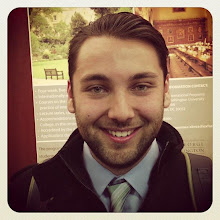The program I chose to study at DIS is called Migration and Identity, and one of our main focuses is studying minority groups in modern European states. In Lithuania, one of those minority groups is the Roma (or Romani) People. Roma is the politically correct term used to refer to ‘gypsies’ in Europe. The word gypsy comes from the false belief that the Roma came from Egypt. The Roma people prefer the word roma to refer to themselves because it means ‘the people’ in their language (Romani), and because the word gypsy carries a lot of negative connotations. Just think of where the word ‘gyp’ (as in a cheat or a con) comes from. The Roma people originally come from Northwest India, and their language is related to those spoken in India today. Most scholars believe that the Roma began traveling around C.E. 500 and arrived in southern Europe around C.E. 1000. The Roma then spread to the rest of Europe, arrive in Lithuania sometime in the 15th century. Their history in Lithuania is generally one of fowl treatment and discrimination. In modern Lithuania, the situation for Roma continues to be difficult. On the official state level, there is no discrimination allowed towards anyone, as a result of European Union treaties, but on the societal level, deep prejudices remain. We visited a Roma settlement on the outskirts on Vilnius to see what living conditions are like. Very few Roma are educated, and most only speak their mother tongue, and Russian (which was mandatory when Lithuania was under the Soviet Union). Therefore, it is impossible for them to get a job in modern Lithuania. They are living on a piece of land that technically doesn’t belong to them, and they have built their houses themselves on this land, which is technically illegal. They generally live in small houses built from whatever materials are available. One source on income the Roma have been forced to turn to is the drug trade. When I visited, I was horrified to find that there were needles and syringes in the streets where children were playing, and a steady flow of taxis bringing drug addicts into and out of the settlement. In the passenger seat of one of the taxis we actually saw a man who was shooting-up before he even had left the settlement.
Nevertheless, the situation isn’t entirely negative for the roma. For the last 10 years, there have been Non-Governmental Organizations as well as public institutions trying to improve the roma situation. They are attempting to educate the Roma, and to empower them to take control of their own situation. There is a community center in the settlement that provides support for the roma, as well as a pre-school that prepares Roma children to go to a Lithuanian -language primary school. From what I have learned, these programs have started to make a small difference in the lives of the Roma in Lithuania, although it is going to take many more years to fully solve all of the difficult problems facing this Lithuanian minority.
We also visited a memorial park commemorating the Paneriai massacre, which took place after Nazi Germany occupied Lithuania during the Second World War. It is the site of a mass murder of more than 70,000 Jews and other minorities by Nazi soldiers, and also by native Lithuanians who were oftentimes just as anti-Semitic as the German government was. Below are some pictures of what I saw.
The Main Monument, with text in Yiddish/Hebrew

The back of the main monument, with translations into Lithuanian, English, and Russian

A Monument to the Catholic Poles killed during the Holocaust and War

A Monument erected by the Soviets, reading "To the Victims of Fascist Terror"





